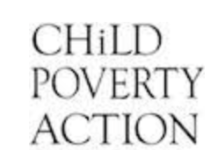
Some residents living around airbases in New Zealand, and in other countries, have been warned against drinking bore water and eating too many eggs because of contamination from ‘perfluoroalkyl’ chemical pollutants, or PFAS, originally found in fire-fighting foam which have made their way to bores, streams and the ocean. There are about 3000 different Per and Poly fluorinated alkyloids, with a range of long complicated names abbreviated to and including PFOS, PFOA and PFHxS.
PFAS are persistent, manmade chemicals produced by Du Pont, BASF 3M and others, and are said to last in the environment ‘forever’ – thousands, or maybe millions of years according to some reports. PFAS compounds bioaccumulate, and have been found in groundwater, surface water, fish, shellfish, eels, soil, grass, eggs, poultry, other birdlife, an orange, watercress, and insects.
PFAS chemicals have been in the news over the last few years because the NZ Defence Force found the contaminants in the environment in Ohakea; in groundwater in Woodbourne – where it was 34 times above maximum drinking water guidelines; in Whenuapai where it was found at 2.5 times drinking water standards and had made its way into the marine ecosystems and in fish, above drinking water guidelines in 14 of 65 groundwater samples and in eggs in Palmerston North’s Ohakea airbase surrounds, and either still in use or in old supplies at Gisborne, Hawke’s Bay and Nelson airports as well as in tank farms at various locations. PFOA is still used in fire-fighting foam at Auckland Airport. There has been no testing at Hobsonville airbase which has been redeveloped for housing, despite Whenuapai firefighting wastewater having been dumped there in previous years.
The New Zealand Government has been criticised for delays in responding to the issue despite growing international concern. Here, some PFAS chemicals were banned in fire-fighting foam in 2006 but they weren’t banned in other products until 2011. The NZ Defence Force was in contact with the Australian Air Force about groundwater contamination here, a year before they told the New Zealand public.
Contamination fears create uncertainty for residents around airbases, airports and surrounding receiving environments. The Ministry for the Environment has ignored Australian recommendations to review public health advice, and scientists and lawyers from the United States say our standards are way too low, and that “PFAS chemicals in the environment are one of the worst environmental disasters to happen to New Zealand and that we’ll be living with the contamination for generations to come”.
New Zealand downplays the health impacts of PFAS, despite global concerns. In 2005 Du Pont was fined around $20 million for failing to alert US environmental regulators to the significant risk of human and environmental harm from PFAS– at that time the largest ever civil penalty applied. Du Pont knew for decades that non-stick frying pans released PFAS within two to five minutes of heating, with human risk. 3M also knew that PFAS accumulated in human blood and in the environment, for more than 40 years, and settled a law suit for $850 million in 2018 for disregarding known impacts on human health. The US Environmental Protection Agency warning levels are set at 70 parts per trillion and some state jurisdiction levels are even more stringent. We allow disposal to landfill, contaminated materials with PFAs present at 50 parts per million, beyond which, they are to be exported to become someone else’s problem. Even now, New Zealand downplays the risks, with standards borrowed from Australia, based on animal thresholds which may not be valid given the bio-accumulative nature of the chemicals in apex consumers like humans, the persistent nature of the chemicals and the risks involved.
The seven main producer companies agreed to a voluntary reduction and phase out of some PFAS by 2015. In the Madrid Statement, a consensus signed by 200 scientists from 40 countries, it was recommended that people should avoid all and any products containing or manufactured including PFAS. New Zealand has banned two types of PFAS, but there’s a risk that newer variants might bond to the blood of humans even more strongly and build up just as much ‘though may be of lower toxicity’.
The NZ Ministry for the Environment has been accused of ignoring Australian recommendations to review public health advice, and while the issue of fire-fighting foam has alerted the public to associated concerns, the prevalence of the chemicals in everyday household items should also be cause for alarm.
Types of PFAS are found in thousands of domestic products. They are favoured because they are resistant to heat, water and oil; they are non-stick and water-proof, and are used in carpets, upholstery, cookware, plastic containers, fast food wrappers, clothing, (Gore-Tex), pizza boxes, protective sprays, and in inks and paint, insecticides and cleaning products, medical equipment and parts for colour copiers and printers. The Ministry for the Environment says they’re often used in the manufacturing process of these items, and that ‘most people have small amounts of these substances in their systems and this is not known to cause a health risk’. That’s not to say they’re not, given the track record of these chemicals, and the companies involved so far, and the lag in Government studies and regulations.
Though apparently the Trump administration tried to suppress the recommendation, even the US EPA indicates that they are likely carcinogens. Elsewhere, studies show effects including liver toxicity, adverse neuro-behavioural effects, tumours and testicular and kidney cancers, liver malfunction, high cholesterol, obesity, reduced birth weight and size, decreased immunity, disruption of lipid metabolism and endocrine systems, neonatal toxicity and death, hypothyroidism, ulcerative colitis, reduced hormone levels, delayed puberty and increased risk of miscarriage.
Governments and chemical companies around the world have been complicit in the use of PFAS in fire-fighting foam with human and environmental health impacts that will last ‘forever’. But even more insidious is the continuing production and sale of new generation PFAS for modern convenience which leave a legacy that has not yet been addressed, and may already be too late.





